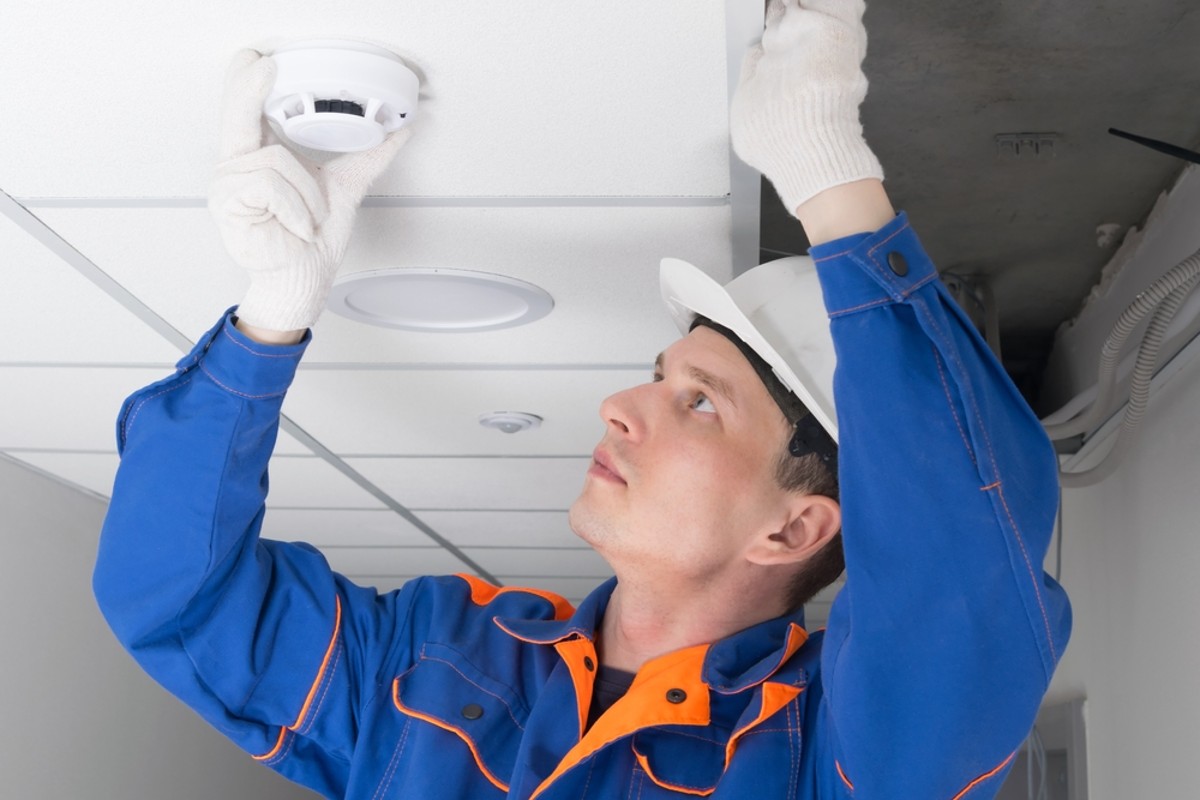In home safety, the installation of smoke alarms stands as a critical first line of defence against the devastating consequences of fires. With fire hazards lurking in the least expected corners of daily life, the importance of having a reliable early warning system cannot be overstated.
This comprehensive guide delves into the nuances of smoke alarm installation, underscoring its significance, exploring types, and outlining best practices tailored for UK households.
The Imperative of Smoke Alarm Installation
Fire incidents in the UK, despite stringent safety regulations, remain a considerable threat to life and property. The UK Fire Services responded to over 150,000 fire incidents in the year ending December 2022 alone, highlighting the persistent risk. Smoke alarms, proficient in detecting the early signs of fire, offer critical minutes for evacuation and emergency response, potentially saving lives and mitigating property damage.
Types of Smoke Alarms
Before delving into installation specifics, understanding the types of smoke alarms available is paramount. UK households typically choose between ionisation, photoelectric (optical), and combination (or dual sensor) smoke alarms.
Ionisation Smoke Alarms
Ionisation alarms are particularly responsive to flaming fires that burn rapidly with little smoke. They work by detecting the change in ionised particles in the air caused by fire.
Photoelectric (Optical) Smoke Alarms
Photoelectric alarms excel in detecting slow-burning, smouldering fires that produce a considerable amount of smoke. They use a light source within an optical chamber to detect the presence of smoke particles.
Combination (Dual Sensor) Smoke Alarms
Combination alarms incorporate both ionisation and photoelectric technologies, offering comprehensive detection across different types of fires.
Legal Requirements and Recommendations
UK legislation mandates the installation of smoke alarms in all new homes. For existing homes, various regional guidelines recommend the installation of smoke alarms on every level of the house, including the loft if it’s used as a living space.
England
In England, landlords are required by The Smoke and Carbon Monoxide Alarm (England) Regulations 2015 to ensure that a smoke alarm is installed on each storey of their rented properties.
Scotland, Wales, and Northern Ireland
Scotland, Wales, and Northern Ireland also have specific regulations requiring smoke alarms in homes, with Scotland having notably stringent requirements under the Housing (Scotland) Act.
Installation Best Practices
Ensuring effective smoke alarm installation is just as crucial as selecting the right type of alarm. Here are some best practices:
Placement
Install smoke alarms on the ceiling as smoke rises, ensuring they are away from walls and corners where the air might be still. Avoid locations near windows, doors, or vents where draughts could impair detection.
Maintenance
Regularly test smoke alarms monthly using the test button, replace batteries annually unless it’s a 10-year sealed unit, and replace the entire unit every 10 years.
Interconnection
Considering interconnected smoke alarms can be beneficial as when one alarm detects smoke, all alarms go off, providing earlier warnings particularly in large or multi-storey homes.
Professional Installation
For optimal safety, consider professional installation, especially if you’re incorporating interconnected alarms or integrating them with a home security system.
Special Considerations for UK Homes
Given the UK’s diverse architecture and weather patterns, there are additional considerations:
- Ensure alarms are audible throughout the house, including sleeping areas.
- In homes with solid fuel appliances, like wood burners, also install carbon monoxide alarms.
- Be mindful of the specific installation requirements if your home is a listed building or located in a conservation area.
The Role of Emerging Technologies
With advancements in smart home technologies, smoke alarms have become more sophisticated. Smart smoke alarms offer features like remote alerts to your phone and integration with home security systems, enhancing safety measures in UK homes.
Conclusion
Smoke alarm installation is a critical component of home safety, offering an essential early warning in the event of fire. By understanding the types of alarms, adhering to legal requirements, and following best practices for installation, UK households can significantly enhance their fire preparedness. Remember, in the face of fire hazards, a properly installed smoke alarm isn’t just a device; it’s a lifesaver.



